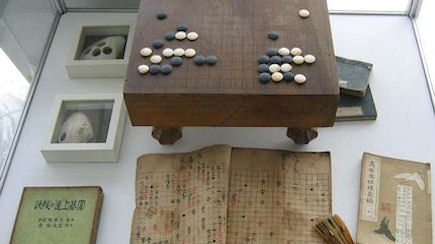This article first appeared in the Mar/Apr 2011 issue of World Gaming magazine.
The ancient game of Go has maintained its popularity throughout the centuries and remains one of Asia’s most played games. In this issue World Gaming looks at the phenomenon of this exciting game.
History
The popular board game Go (known in Mandarin as Wéiqí), is played by more than 20 million people worldwide, enjoying most of its popularity in China, Korea and Japan. It is one of the world’s oldest board games, and its rules have remained essentially unchanged over many centuries.

Go originated in ancient China, with the first record of the game dating from the 3rd century BC. There are several theories as to how this strategy-rich game was created. One theory has it that Emperor Yao designed the game for his son Danzhu while other theories suggest Go was invented by Chinese tribal warlords and generals who practiced plotting attacking positions using pieces of stone.
In the 6th century AD the game made its way to Japan and Korea. In Japan the game is known as Go or Igo. It became popular with the imperial court in the 8th century and by the 13th century it was played throughout Japan. In Korea the game is called Baduk, though there is a variant known as Sunjang Baduk which was the main version of Go played in Korea until the end of the 19th century.
Go was introduced to the West via Japan, which is why its name in English is also Go. It became increasingly popular in the late 19th century and by the turn of the century Americans Edward Lasker and Arthur Smith had established the New York Go Club. Both men published books about Go and this led to further interest in the game. In 1935 the American Go Association was formed and soon after the German Go Association was born.
The Equipment
Go is a game for two players, who play using a board covered in a 19 x 19 grid of vertical and horizontal lines, and a set of black and white stones. Each intersection of two lines is considered a position on the board, so there are 361 positions on which to place stones. A full set contains 181 black stones and 180 white stones so there are enough stones to cover every position on the board. The extra black stone exists because black moves first, with moves then alternating between white and black. Traditionally the black stones are slightly bigger than the white ones, to counter the optical illusion of the white stones looking slightly larger when placed on the board.

Go was originally played on a 17 x 17 board but the larger layout became standard by the time it was introduced in Japan and Korea. The board typically measures 45cm to 48cm in length and 42cm to 44cm in width although Chinese boards are slightly bigger because of the traditionally larger Chinese Go stone. Boards come in two styles: a table board similar to those used for games such as chess, and a floor-style board with its own freestanding table.
The bowl where the stones await play is round with a flat top and bottom. Traditionally the bowls were made of a turned wood but today more modern and inexpensive materials are used though the traditional shape is often retained.
Despite its relatively simple rules Go players often employ very complex strategies to beat their opponents. It is said that Go is even more complex than chess. Indeed, the world’s best chess computers now beat the world’s best chess-playing humans, but the world’s best Go computers are routinely beaten by talented children! In future issues, we will move on to the rules and strategies of this fascinating game.
If you’re interested in the history and rules of other board or card games why not visit www.wgm8.com and follow the links to related stories.







